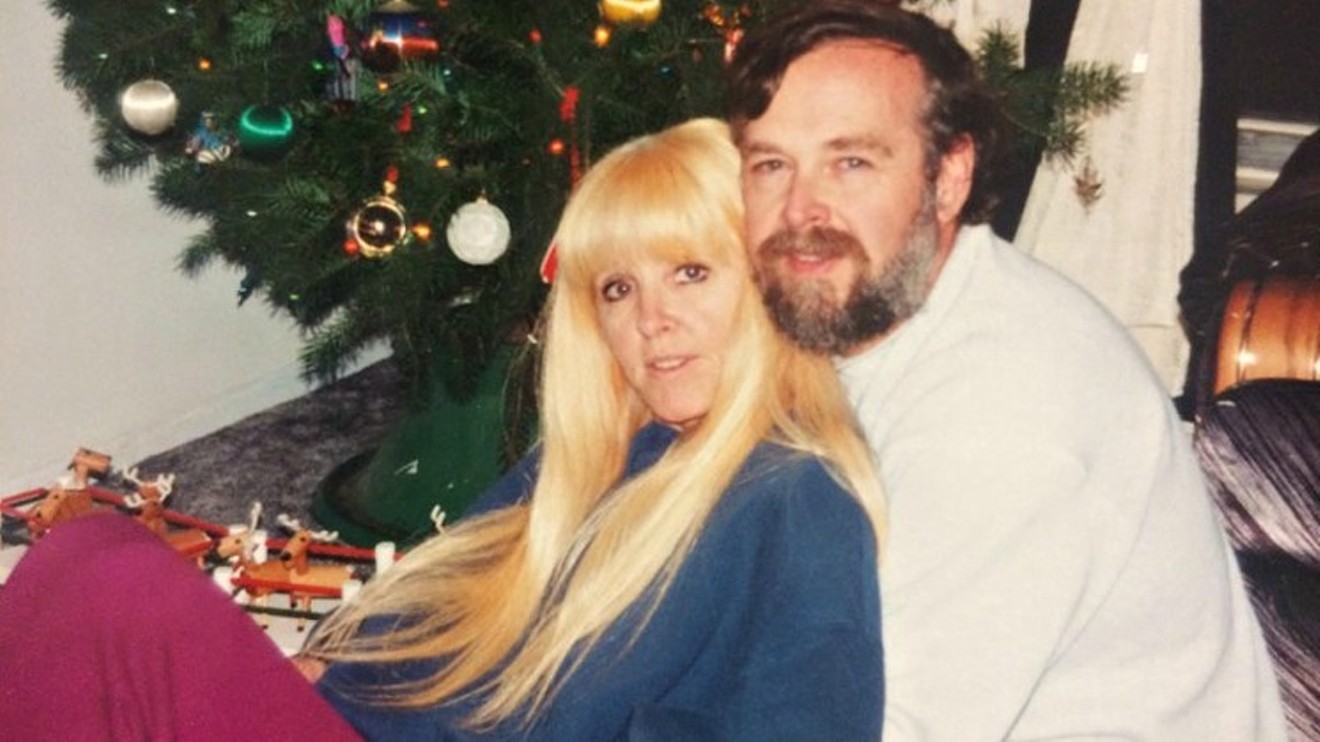These figures roughly correspond to ones released in December by Compassion & Choices, which led the campaign for Proposition 106. The group estimated that between 45 and 55 terminally ill adults requested prescriptions for medical aid in dying during 2017.
Accessibility to end-of-life options remained a question even after the passage of Proposition 106, as we reported in the January 2017 post "Are Dozens of Hospitals Violating Letter or Spirit of the Medical Aid in Dying Law?"
Aurora's Kathy Myers, who's believed to be the first person in the state to request medical aid in dying, went public that same month about her struggle to find a doctor who would prescribe the medication to end her life. She died in March after a long battle with chronic obstructive pulmonary disease (COPD).
"When we actually got the medication, it was like a weight had been lifted off her shoulders," Kathy's husband, Herb Myers, said in a statement. "She was down to 76 pounds, and she put on four pounds, which was a big deal. She felt so much more at ease with life in general."

Kathy and Herb Myers in January 2017, when they went public with their difficulty in finding a doctor to prescribe medication to end her life.
9News file photo
Back in 2016, opponents of Proposition 106 suggested that the number of people requesting help to end their lives would be overwhelming. These predictions were refuted by advocate Julie Selsberg, who became involved in the End of Life Options Act campaign following the death of her father, Charles Selsberg, from amyotrophic lateral sclerosis (ALS). Charles wrote a public letter about his situation that inspired death-with-dignity legislation, but it failed to win approval from Colorado's General Assembly.
"In 2016, Oregon put out their statistics for the previous year," Selsberg told us in regard to a state whose end-of-life statute served as something of a model for Colorado's. "And [in 2015], 218 people requested the prescription, and 132 actually took it. Of those 132, seven of them had their prescription from the year before — so you can't just keep it contained within one calendar year. But we're talking about a state that has four million people and 35,000 deaths per year. The percentage of people dying from using medical aid in dying is .3 percent. It's tiny."
At present, Compassion & Choices says 81 health-care facilities in thirty Colorado communities, as well as sixteen hospices in fifteen towns, "have adopted official policies supportive of patient end-of-life decision-making." That includes large systems such as Kaiser, HealthOne and the University of Colorado.
The characteristics of Colorado patients who were prescribed aid-in-dying medication last year are similar to those recorded in other states with similar laws, the CDPHE reveals. Slightly more males than females — 54 percent to 46 percent — requested the meds. Their median age was 75, with the majority, 64 percent, suffering from cancer. An additional 10 percent had ALS, and 9 percent were diagnosed with respiratory conditions such as COPD. Approximately 93 percent were receiving hospice care at the time of the prescriptions.
Click to read the 2017 Colorado End of Life Options Act report.












